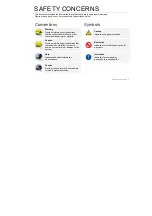
9
1.15 W/kg.
While there may be differences between the SAR levels of
various phones and at various positions, they all meet the
government requirements.
SAR compliance for body-worn operation is based on a
separation distance of 0.4 inches (10 mm) between the unit
and the human body. Carry this device at least 0.4 inches (10
mm) away from your body to ensure RF exposure level
compliant or lower to the reported level. To support body-worn
operation, choose the belt clips or holsters, which do not
contain metallic components, to maintain a separation of 0.4
inches (10 mm) between this device and your body.
RF exposure compliance with any body-worn accessory that
contains metal was not tested and certified, and use of such
body-worn accessory should be avoided.
FCC Regulations
This device complies with part 15 of the FCC Rules. Operation is
subject to the following two conditions: (1) This device may not
cause harmful interference, and (2) this device must accept any
interference received, including interference that may cause
undesired operation.
This equipment has been tested and found to comply with the
limits for a Class B digital device, pursuant to part 15 of the FCC
Rules. These limits are designed to provide reasonable
protection against harmful interference in a residential
installation. This equipment generates, uses and can radiate







































